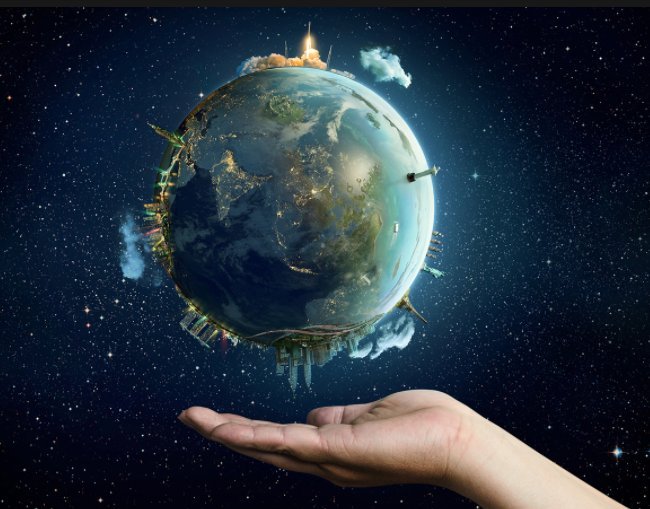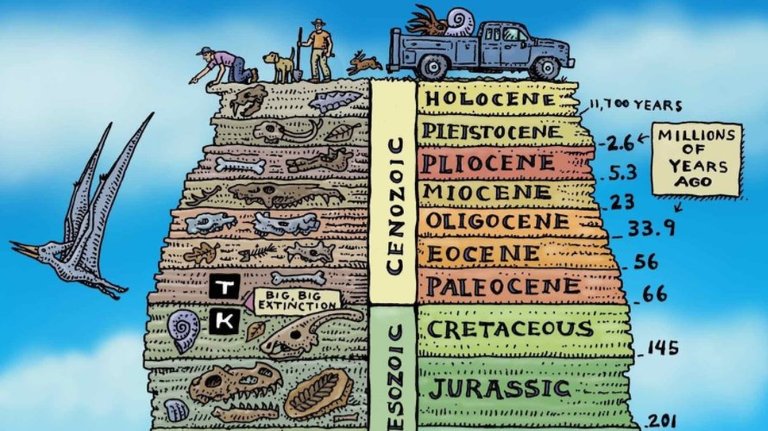
The boundaries of geological epochs have to “be recognizable in the geological records millions of years in the future” (Foley et al. 2013: 2). Foley mentions an interesting exception, namely the Holocene which instead is defined by ice cores. Ice do not leave a durable record in the geological layers (Foley et al. 2013: 2).
One of the main markers are changes in the fossil record, defined by first appearances or extinctions. One of the undeniable proofs of the Anthropocene is the ongoing mass extinction, which will leave a notable change in the fossil record (Foley et al. 2013: 2). For the Anthropocene the mass extinctions during the Pleistocene as well as the ongoing mass extinction are proposed as boundaries (Lewis & Maslin 2015: 173, Foley et al. 2013: 2).

Another proposed main marker for the Anthropocene is the Neolithic revolution, which starts around 11,500 years ago. The dawn of agriculture meant an increase record of human activity, with pollen preserved in sedimentary sequences. Another effect may have been elevated CO2 levels, following the clearance of woodland. The Neolithic revolution also enabled population growth and urbanisation, culminating in the rise of cities (Zalasiewicz et al. 2011: 836).
The final two main markers are more recent, the industrial revolution and the great acceleration. The industrial revolution representing rapid population growth and an increase of urbanisation, as well as rising levels of CO2 in the atmosphere (Zalasiewicz et al. 2015: 199). The great acceleration has led to intensive escalation of human-caused effects on Earth. This includes the spreading of artificial radionuclides, rapid increase of greenhouse gases and intensification of anthropogenic changes to a wide array of ecosystems, among others (Zalasiewicz et al. 2015: 199f).
I think the best way to view the concept of the Anthropocene is as a gradual process in which there are many different contributing factors. Maybe a definitive starting point isn’t that important, and instead the focus should lie on defining a point where the consequences of the human driven processes on earth is no longer deniable.
References:
Foley, S. F., Gronenborn, D., Andreae, M. O., Kadereit, J. W., Esper, J., Scholz, D., … Crutzen, P. J. (2013). The Palaeoanthropocene – The beginnings of anthropogenic environmental change. Anthropocene.
Lewis, S. L., & Maslin, M. A. (2015). Defining the Anthropocene. Nature, 519(7542), 171–180.
Zalasiewicz, J., Waters, C. N., Williams, M., Barnosky, A. D., Cearreta, A., Crutzen, P., … Oreskes, N. (2015). When did the Anthropocene begin? A mid-twentieth century boundary level is stratigraphically optimal. Quaternary International.
Zalasiewicz, J., Williams, M., Haywood, A., & Ellis, M. (2011). The Anthropocene: a new epoch of geological time? Philosophical Transactions of the Royal Society of London A: Mathematical, Physical and Engineering Sciences, 369(1938), 835–841.
Great post, very interesting :)
Thanks for commenting and reading.
hello , thanx for sharing this info as it concerns us all .
I'm very interested in these subjects and the new developments in creating material that has less carbon gasses in production processes or that is more eco friendly to produce , from start to end.
may I suggest to read my post about some new developments about reducing CO2 gasses in the atmosphere .
https://steemit.com/science/@backtwoflash/new-technology-that-transforms-co2-into-fuel-and-stone.
maybe you want to pick up on the conversation I had with someone who replied on my post .
Good to know someone is equally concerned and is actively using this platform to inform and educate as well. I will definitely look at your posts and articles as well as follow. I appreciate the intuitive comment.
NICE ONE ,,,,I FOLLOW YOU YOU CAN FOLLOW ME,,,I GIVE YOU GOOD INFORMATION